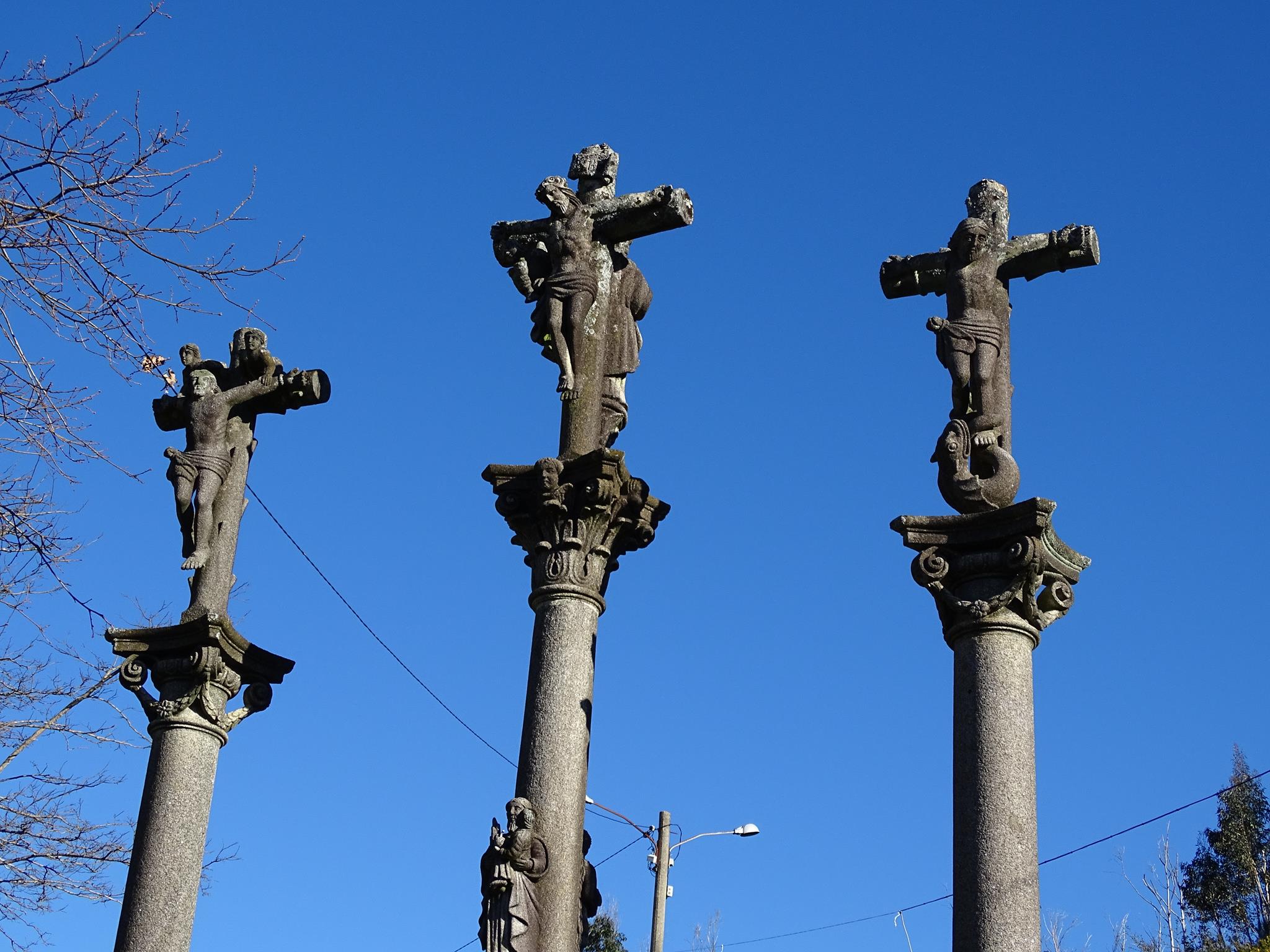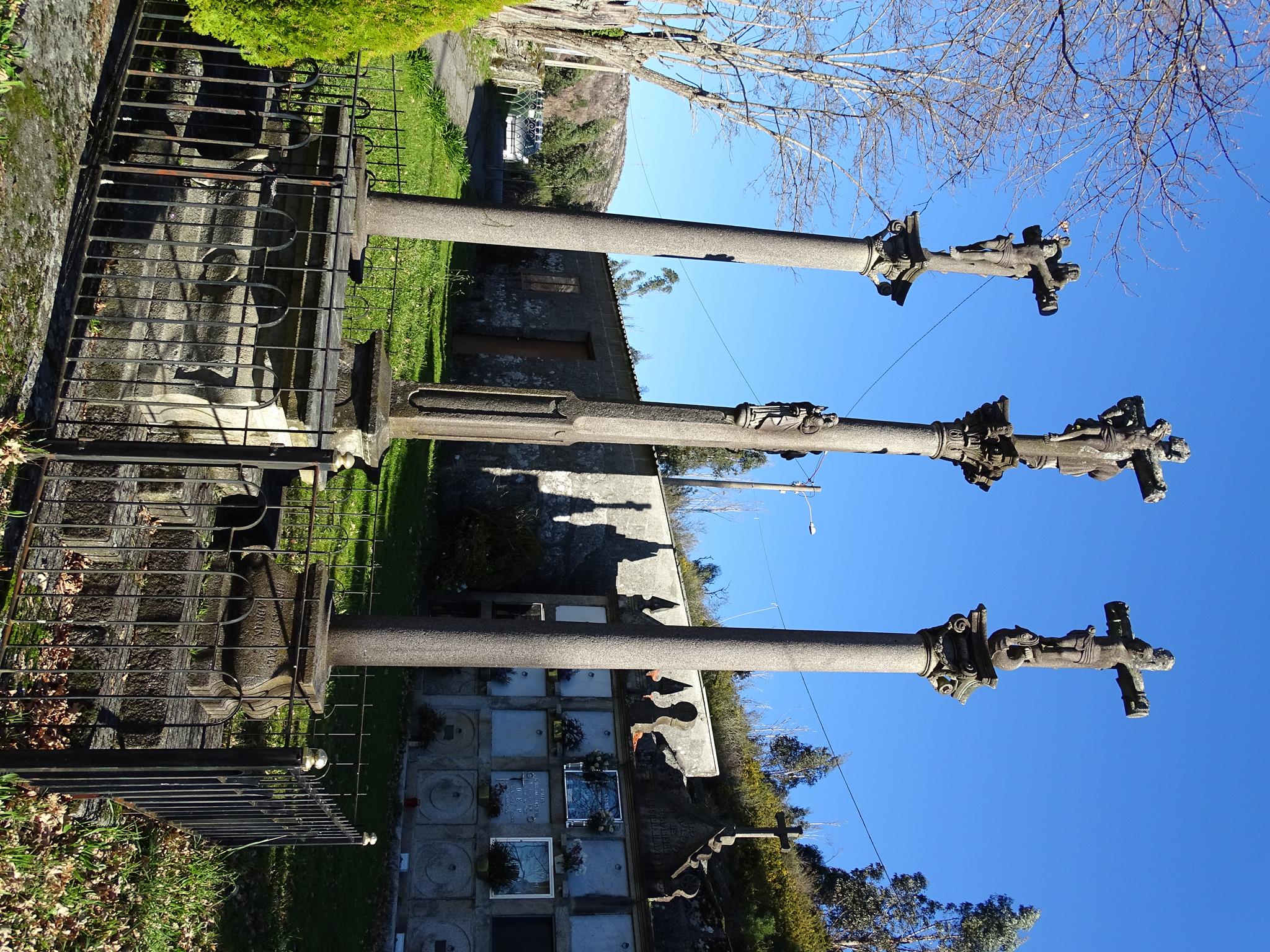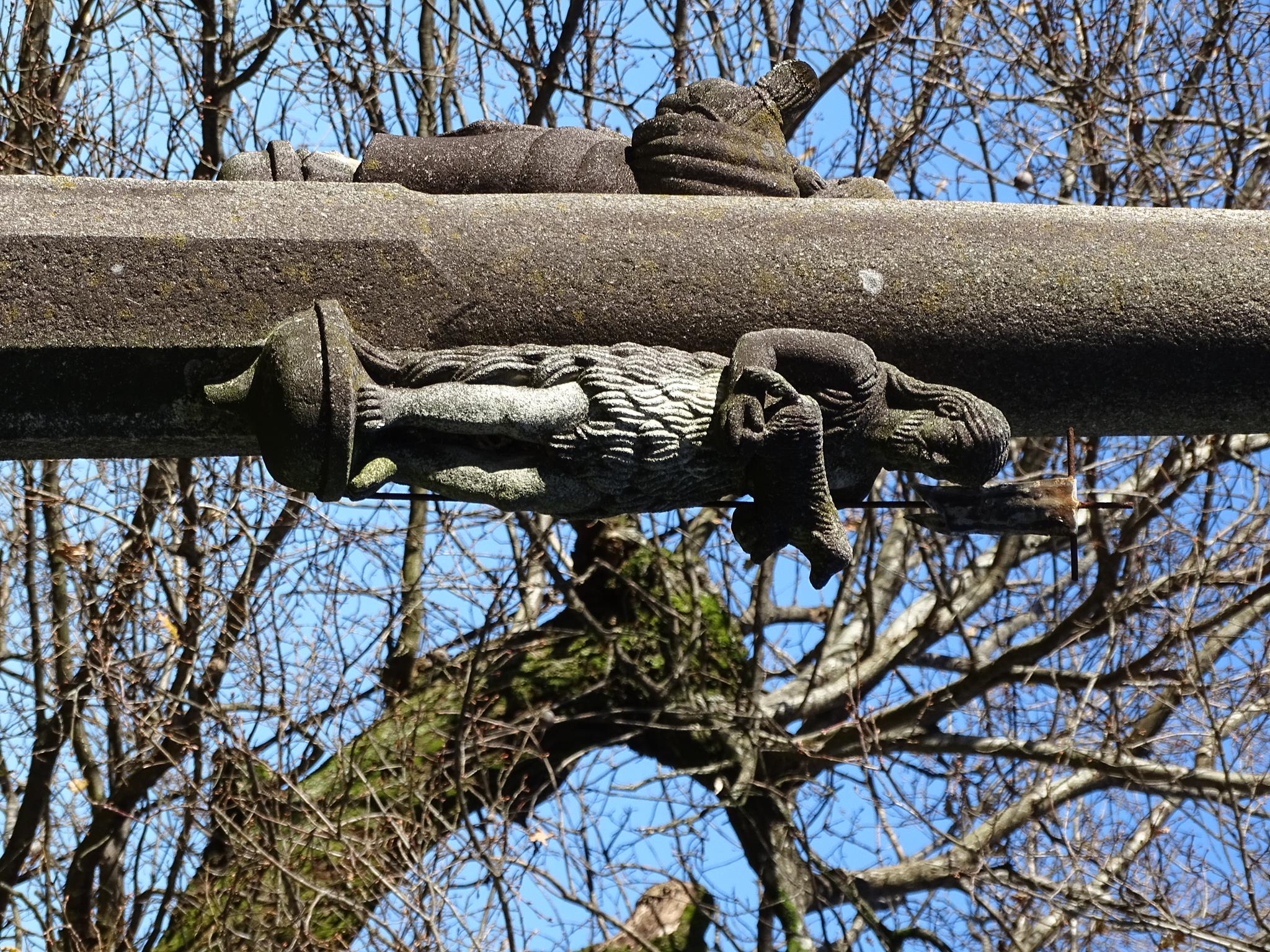Calvary of the church
Located in the parish atrium, it was erected in 1833; it also recites an inscription located on the back of the base of the main cross. It is made up of three granite crosses that appear protected by a metal grid. In front of them is an ornamental stone bench -which is no longer used- in which stands out a beautiful front of sinuous mouldings with a circle plate in the centre. The central cross presents a square pedestal in which there are inscriptions related to the year of construction, name of the sculptor (Manuel González) and the parish priest on each one of the faces. The shaft is of square base rising up to a height of one meter; from there it becomes an octagonal section. In the middle of the shaft appears the figure of St Joseph and on the back St John the Baptist. The cross is cylindrical and welcomes the figure of the crucified Christ and, on the reverse, the image of the Virgin of the Rosary. The lateral crosses sit on slightly smaller pedestals in which appear the names of the thieves who accompanied Christ on Calvary: Dimas, the good thief, and Giestas, the burglar. The shaft of the column is cylindrical, its circumference being reduced at the upper end. The cross on the right is cylindrical and to us it seems like a tree. Right next to the main façade of the temple stands another granite Calvary, this time without figuration, in which stands out the plasticity and realism of the shroud that hangs from the crossbar.




